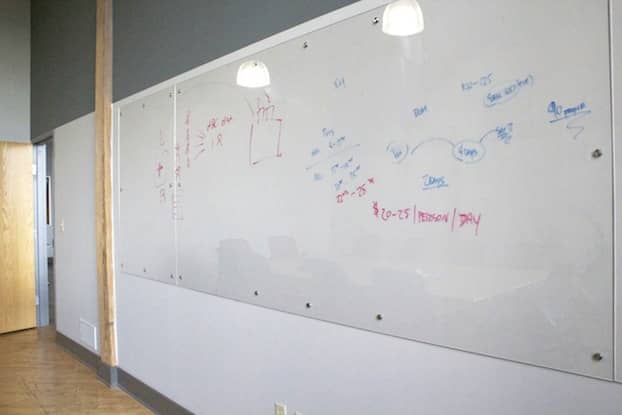
Back in September we outfitted out or office with walls full of long-awaited whiteboards. Whiteboards are great for brainstorming, and they make it easier for us to work together on a wide variety tasks. We looked into a number of options, from standard whiteboards to whiteboard paint, but we ultimately decided to do something a little more unique.
Since then I have been asked a number of times what we used to create out our whiteboards, so I thought I would put together a step-by-step guide for others to follow.
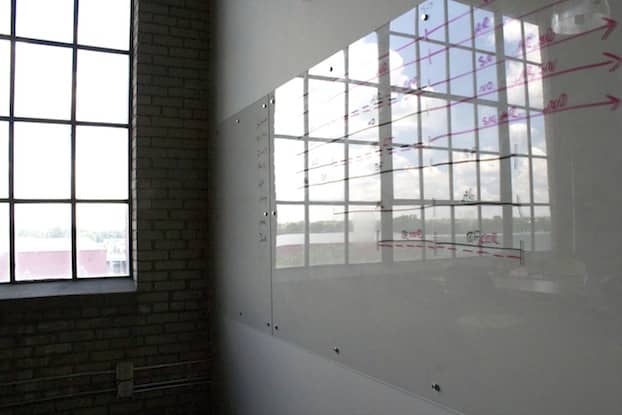
Whiteboard Surface
We looked into a number of different options for the whiteboard surface. Every whiteboard surface I have used in the past always looks great at first, but with age starts looking worse and worse, becoming increasingly difficult to keep clean. Because of this we decided to use a different product, plexiglass. The clear plexiglass works well with our walls, which are sort of an eggshell white. You might want to start with a plexiglass sample to test if dry-erase marker is readable enough against the color of your walls.
We got the plexiglass from local glass company, Vos Glass, who precut the 4'x'8 sheets to the sizes we needed. We initially got ⅛" plexiglass, however we discovered it was difficult to get such a thin product to lay flat against the wall. We swapped out our ⅛" plexiglass for ¼" which solved that problem.
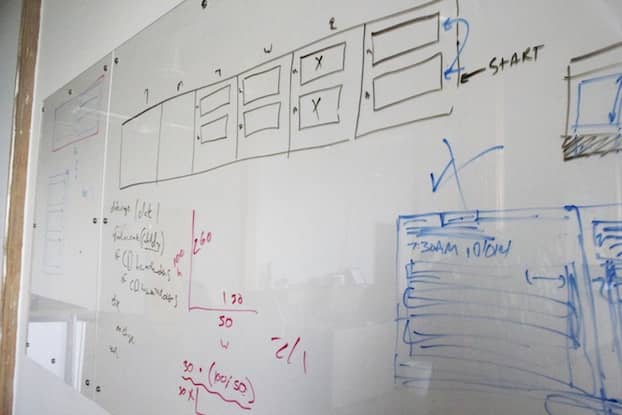
Some Considerations
Now that we have been using our whiteboards for a while, we have noticed a couple downsides to using plexiglass as a surface. Depending on the placement and type of lighting you have, there can be some obnoxious reflections, making reading the boards difficult. Taking pictures of plexiglass whiteboards can also be difficult, especially in combination with the above light reflection issues. As best you can, try to be mindful of your light sources when you place the boards. All in all, however, we are extremely happy with the surface we selected.
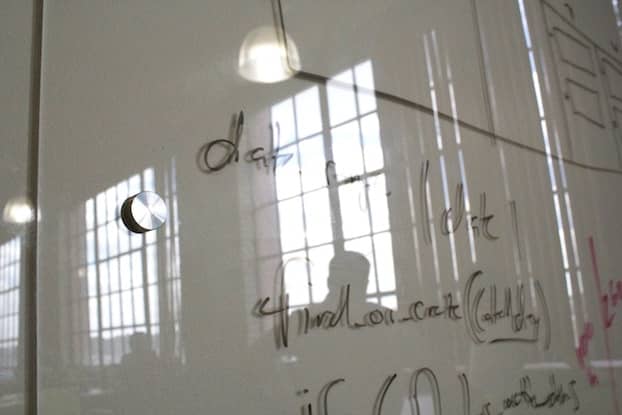
Mounting
We purchased decorative mounting hardware from an online retailer. The exact model we purchased isn't available any longer, but they still carry similar options with multiple finishes (chrome, satin, gold) which you can find here.
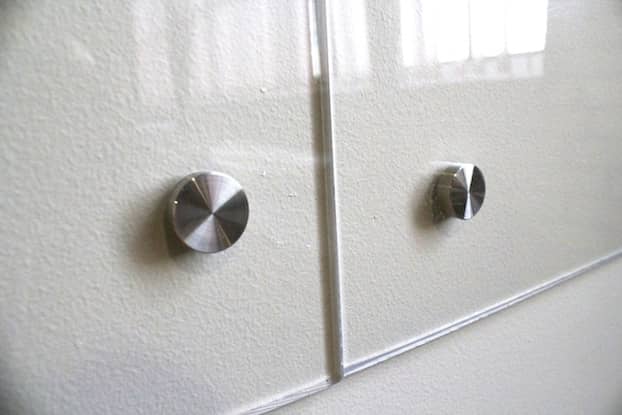
We experimented with the number of mounts that were necessary to attach the plexiglass and found that in order to make the 1/4" plexiglass lay nicely against the wall, we needed to space our screws no more than about 2 feet apart (we used 5 screws across an 8' span).
Installation
We used a combination of our own manpower and hired a local contractor to help us mount and install the whiteboards. If you don't feel up to the task of self-installation, you can always ask your plexiglass supplier for contractor referrals (this is why it helps to buy local!).
Why Whiteboards?
Whiteboards are a great idea for any office. They don't generate waste or require many other supplies. They can fill a space with ideas while still keeping it clean.
Whiteboard writing is generally seen as dispensable and temporary, which reinforces their purpose as a brainstorming tool. We have a general rule at Mutually Human, which is that If you want your whiteboard writing to be preserved, you have to explicitly say so by writing a big, noticeable “Don't Erase" on the board. This keeps whiteboards temporary by default.
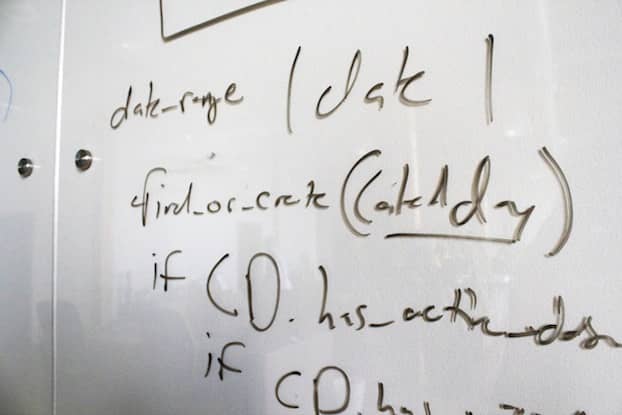
If you end up completing a similar project with these instructions, send along some pictures to hello@mutuallyhuman.com.